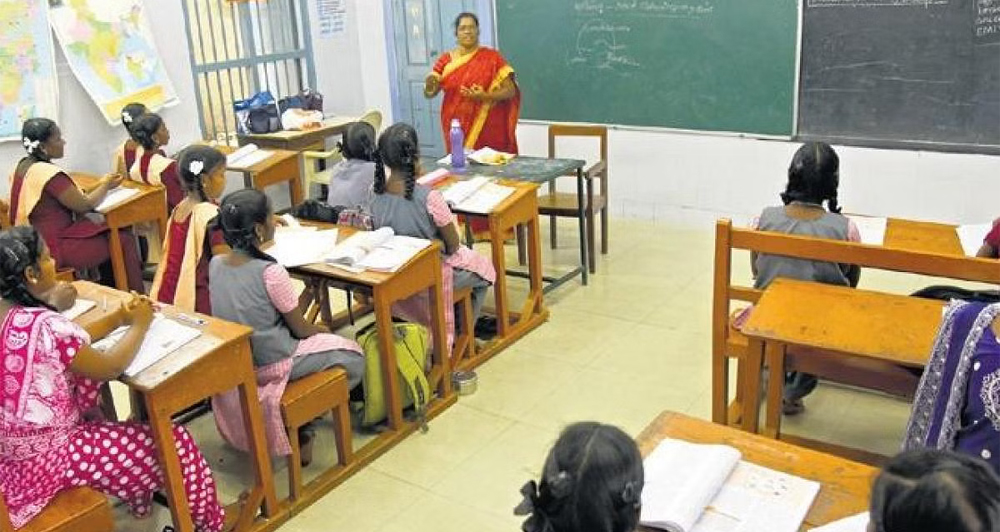
The decisive influence of organised unions to stall crucial academic and administrative reforms can be
tamed only with political will.
The National Education Policy 2020 (NEP) has gained traction unusual for a government policy. The
Centre has set into motion structural changes and innovations, particularly in higher education, with an
unprecedented speed and determination to create an ecosystem for the vision of the policy to sprout.
Of course, it could well be interpreted as a proof of efficiency and determination of a government that
means business. Now that NEP is a fait accompli, there is an urgent need to recognize the tremors generated by its meteoric implementation and guard against the impending turbulence and eventual
decline of public universities.
To appreciate the scale of the possible unsettling implications, it is necessary to understand NEP’s vision
on higher education. It envisions large, multidisciplinary universities and colleges, with at least one in
every district. The emphasis is on interdisciplinary education, institutional autonomy, flexible and innovative curricular all leading towards a ‘global citizenship education’. What is contemplated is not a
transformation of existing universities but the creation of a new landscape. Some definitions that the
policy puts forth are crucial: “The main thrust of this policy … is to end the fragmentation of higher education by transforming higher education institutions into large multidisciplinary universities, colleges
and HEI (Higher Education Institution) clusters … each of which will aim to have 3000 or more students.”
(10.1) Moving towards such multidisciplinary universities and HEI clusters is claimed as ‘the highest
recommendation’ of the policy. The policy distinguishes autonomous degree-granting colleges and HEIs,
which are used interchangeably with ‘university’. These ideas have to be read along with the vision statement that the system of affiliated colleges will be phased out over a period of 15 years. Existing
universities will mentor affiliated institutions to attain the status of autonomous degree-granting colleges. Multidisciplinary universities (having no affiliating function) will concentrate on research.
What is attempted here is not a critique of the NEP, though it has undesirable ideological biases and
practical blind spots. But in this high-speed implementation regime, the existing universities and affiliated colleges will have to take stock of their capabilities and culpabilities. Public universities in our country seem to have no strategy to navigate this defining season of deconstruction. With the NEP’s axiomatic faith in autonomy, flexibility and interdisciplinary curricula, how much are our universities equipped to benefit from these articles of faith? Do they have the required flexibility in their decision making systems to ensure academic alacrity?
The procedural overload, redundant administrative practices, and inherent mistrust of new courses and
innovative course designs still plague our public universities. Resistance to interdisciplinary elements in
curriculum, and the slow pace of curriculum changes and pedagogic innovations—are all uncomfortable
truths that cannot be wished away. The decisive influence of organized unions to stall crucial academic
and administrative reforms can be tamed only with considerable political will.
As long as the imminent need to adapt to changes and dismantle existing systems and structures of
another era is not fully internalized, our universities will be caught unawares. Any reform in these universities often gets diluted to the level of the comfort zone of stakeholders. The existential need to
bring in radical structural, procedural and attitudinal changes has not received the critical attention it deserves. In fact, lack of flexibility and adherence to meaningless and outdated practices continue to
play havoc in these bureaucracy-dominated institutions. Status quo is often guarded zealously, asphyxiating vitality and creativity. The more we refuse to accept this ugly image in the mirror, sooner
will appear the first cracks in the edifice.
Such cracks will appear not as any direct onslaught from the Central government but by the natural
disinclination of students to public universities. A student, while taking academic decisions, will naturally
weigh the available options. The NEP encourages private universities, foreign universities, HEIs, and
facilitates the introduction of vibrant and relevant courses with options to transfer credits and several
such innovative characteristics. With a rather loose regime for fees regulation, these institutions will
have the freedom to charge heavily. Admittedly this will lead to social exclusion, with such education
becoming more accessible to the well-to-do students.
Public universities, with moribund systems and lackadaisical decision-making style, would still be limping
to adapt to changes—even while offering less relevant courses with outdated syllabi but with a fee
structure affordable to the poor student. Such a shocking scenario not only creates social distances but
leads to the emergence of the academic rich and academic poor.
With the implementation of the NEP proceeding in full form and speed, how can the slumber of public
universities be condoned? As long as universities have no control on the new ecosystem created by the
policy, the only option is to change or perish. But how does that change come about? Who will initiate
the change? Chancellors, vice-chancellors, governments, university syndicates? The priorities of our
universities are yet to be realigned to the realisation of the inherent challenges of NEP. The tug of war
between governments and governors, tussles among unions, and proxy wars between political parties in
university bodies—all provide a good enough smokescreen for the NEP to act. Alternative opportunities
will be offered, foreign universities will arrive, and private universities will flourish as visualised in the
policy.
By the time we end our quibbles and quarrels, the revival and survival prospects of public universities
would have gone beyond the tipping point. That perversely fulfills NEP’s implied vision: to sing the dirge
of public universities. Liberalism may not be unsullied, good or bad in economics, but in education is
admittedly lethal.
(The writer is a Former Kerala chief secretary and ex-VC, Thunchath Ezhuthachan Malayalam University)





